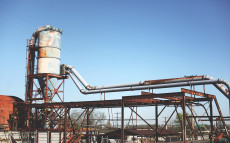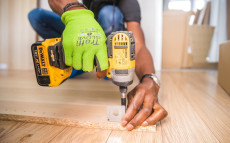- pathfindersAI
- Job Profile
Manufactured Building and Mobile Home Installers
Summary
Manufactured Building and Mobile Home Installers
What They Do
Manufactured Building and Mobile Home Installers are skilled tradespeople who specialize in setting up and maintaining prefabricated structures and mobile homes. These installers work with a variety of manufactured buildings, ranging from residential mobile homes to modular office units. Their role is integral to ensuring that these structures are safely, securely, and efficiently installed at designated sites, whether they are urban, suburban, or rural areas.
Job Responsibilities
The job responsibilities of a Manufactured Building and Mobile Home Installer are diverse and multifaceted. Primarily, these installers are responsible for transporting prefabricated sections to the installation site and then assembling these components according to precise blueprints. They must ensure that all parts are accurately aligned and securely anchored. This often involves tasks like securing foundation supports, installing plumbing and electrical systems, and affixing external and internal fixtures. Installers must also troubleshoot and resolve issues that arise during the assembly process, and perform thorough inspections to ensure compliance with safety standards and building codes. Additionally, they may provide maintenance and repair services, ensuring the longevity and proper function of installed structures.
Essential Skills
Manufactured Building and Mobile Home Installers require a diverse skill set to perform their duties effectively. Technical proficiency in using hand tools and power tools is fundamental, as is a strong understanding of blueprints, technical diagrams, and building codes. Attention to detail is crucial, given the precision needed for assembly and installation tasks. Physical stamina and strength are also necessary, as the job often involves lifting heavy materials and working in various weather conditions. Problem-solving skills are essential for identifying and addressing installation issues efficiently. Furthermore, good communication skills are important for coordinating with other construction professionals, clients, and inspectors.
Educational Pathways
The educational pathways for aspiring Manufactured Building and Mobile Home Installers typically involve a combination of formal education and on-the-job training. While a high school diploma or GED is the minimum educational requirement, many employers prefer candidates who have completed courses in vocational or technical schools. Subjects such as carpentry, electrical work, and plumbing are particularly relevant. Apprenticeship programs offer an excellent opportunity to gain hands-on experience under the guidance of seasoned professionals, and these programs may last from one to three years. In some states, certification or licensing may be required, which involves passing written exams and demonstrating competency in practical skills.
Career Prospects
The career prospects for Manufactured Building and Mobile Home Installers are promising, with consistent demand driven by the growing popularity of affordable, sustainable, and efficient housing solutions. The Bureau of Labor Statistics projects steady employment growth in this sector, as manufactured buildings and mobile homes become increasingly prevalent. Experienced installers may advance to supervisory or managerial positions, or even start their own installation businesses. Additionally, there is potential for specialization in areas such as green building techniques or advanced modular construction, which can open up further career opportunities.
Conclusion
In conclusion, the role of a Manufactured Building and Mobile Home Installer is both challenging and rewarding, offering a vital service in the housing and construction industry. With varied job responsibilities, essential technical and interpersonal skills, and multiple educational pathways, this career provides a solid foundation for those interested in hands-on, practical work. As the demand for manufactured buildings and mobile homes continues to rise, so too do the career prospects for dedicated professionals in this field. By ensuring that these structures are safely and efficiently installed, Manufactured Building and Mobile Home Installers play a crucial role in meeting the housing needs of diverse communities.
Video
Compensation
| State | Median Salary | Median Hourly | Positions |
|---|---|---|---|
| AL | 38,530 | 18.53 | 90 |
| CA | 49,070 | 23.59 | 150 |
| FL | 34,050 | 16.37 | 130 |
| GA | 46,780 | 22.49 | 70 |
| IN | 31,920 | 15.34 | 60 |
| KY | 38,790 | 18.65 | 50 |
| MT | 43,780 | 21.05 | 70 |
| NH | 62,880 | 30.23 | 60 |
| NY | 39,630 | 19.05 | 70 |
| NC | 36,940 | 17.76 | 140 |
| PA | 39,280 | 18.88 | 160 |
| SD | 44,600 | 21.44 | 60 |
| TN | 40,190 | 19.32 | 50 |
| TX | 37,260 | 17.91 | 880 |
| VA | 38,980 | 18.74 | 40 |
| WA | 47,210 | 22.70 | 250 |
| WV | 22,830 | 10.98 | 100 |
Similar Occupations
In this area you will find other occupations that are close to the one you were viewing in tasks, knowledge and work environment. If the primary job profile you are viewing isn't quite to your liking, take a look around and see what else is available.
Basic and Premium Accounts have more alternative occupations available than the Free account.

Aircraft Structure, Surfaces, Rigging, and Systems Assemblers - 51-2011.00
Aircraft Structure, Surfaces, Rigging, and Systems Assemblers are responsible for constructing, assembling, and installing the mechanical components and systems of aircraft according to blueprints, specifications, and quality standards. They ensure the structural integrity and functionality of the aircraft through precise assembly of surfaces, rigging, and integrated systems, including electrical and hydraulic components.
-
$61,240/yr
Median Pay -
29,810
Number of Jobs

Carpenters - 47-2031.00
A carpenter constructs, installs, and repairs building frameworks and structures, such as stairways, doorframes, partitions, and rafters, made from wood and other materials. They also read blueprints and measure, cut, and shape wood, plastic, and other materials to complete construction projects.
-
$56,350/yr
Median Pay -
700,290
Number of Jobs